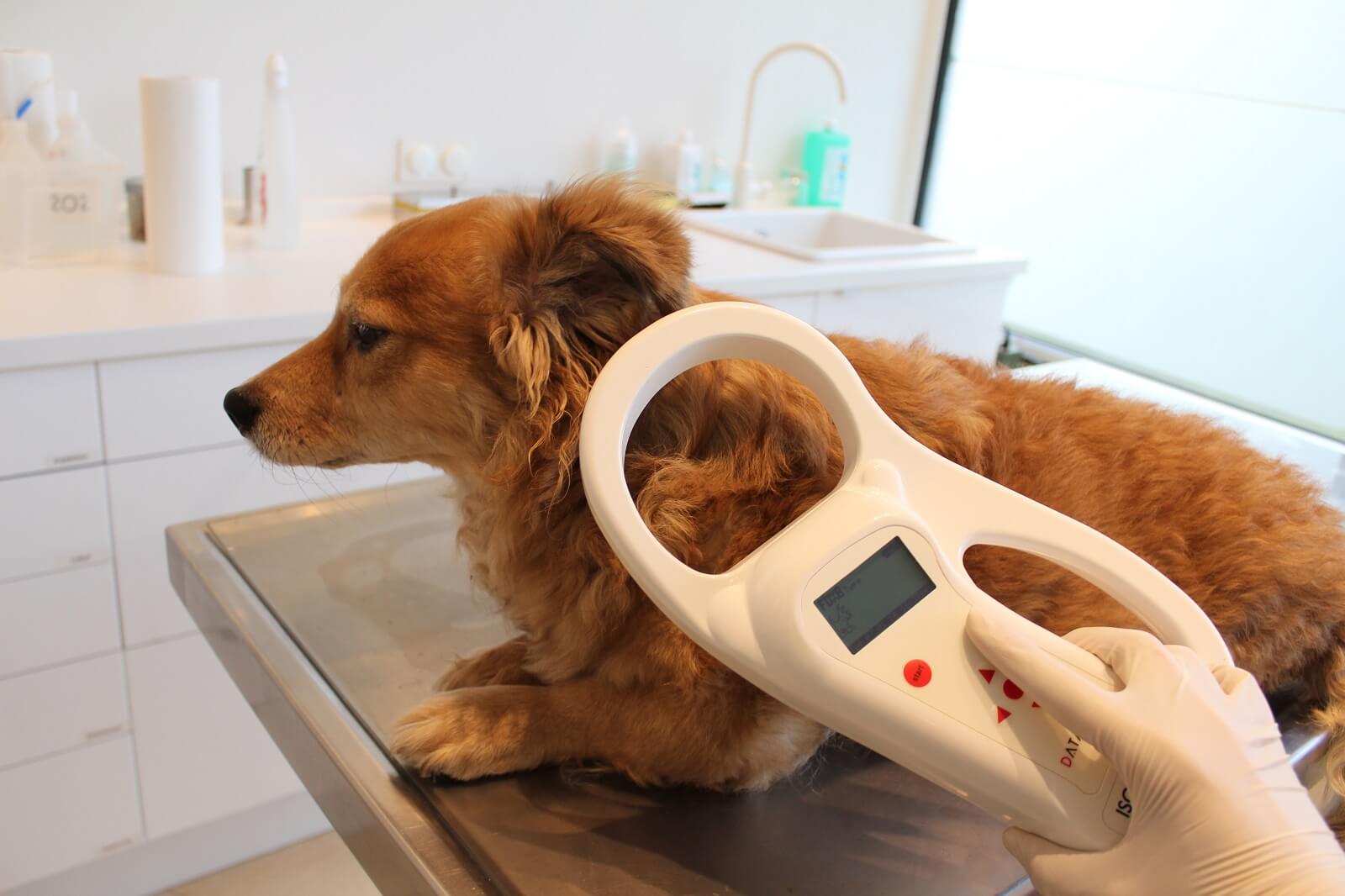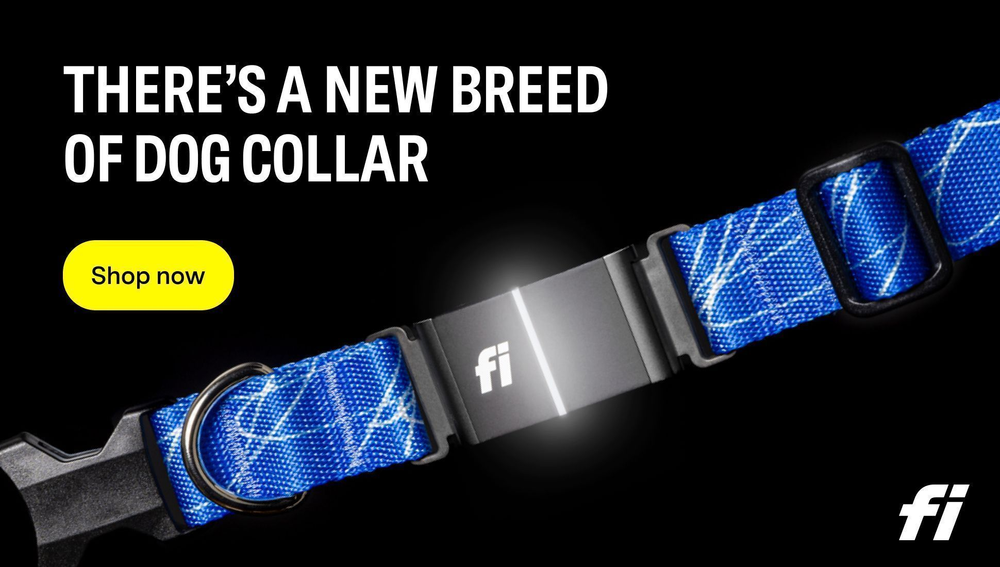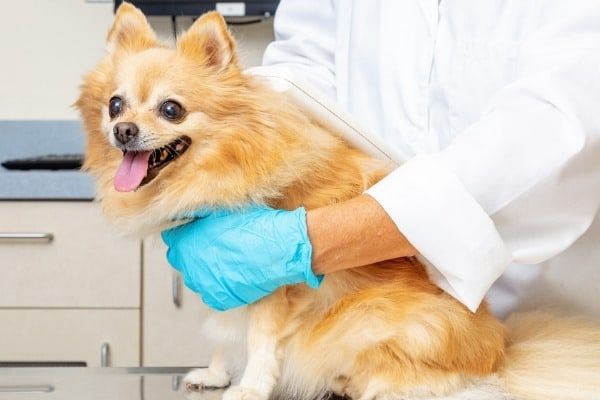Microchipping has become a popular and effective method of identifying and locating lost or missing dogs. It provides pet owners with peace of mind and increases the chances of a reunion if their furry friend goes astray. But can you actually feel the microchip in your dog? Let's explore the world of dog microchips and address this common concern.

A microchip for dogs is a tiny electronic device implanted under the skin, typically between the shoulder blades. It contains a unique identification number that can be scanned and matched with the owner's contact information. The microchip itself is about the size of a grain of rice and is designed to be unobtrusive and safe.
While it is rare to physically feel the microchip once it is implanted, there are certain factors that can determine whether or not it may be detectable. One such factor is the size of the microchip, which is typically very small. the exact placement of the microchip can affect how easily it can be felt. By understanding these factors, dog owners can get a better idea of whether or not they might be able to feel their dog's microchip.
There are situations where the microchip might be felt, although they are relatively uncommon. Factors such as a thin layer of skin, minimal body fat, or a shallow implantation can increase the likelihood of feeling the microchip. However, most owners will not be able to feel the microchip in their dog under normal circumstances.

If you are unsure whether your dog has a microchip, there are methods to determine its presence. Using a microchip scanner, which emits a low radio frequency, can help identify if a microchip is present. Alternatively, consulting with a veterinarian who has the necessary equipment and expertise can provide accurate information about your dog's microchip status.
What is a Microchip for Dogs?
A microchip for dogs is a small electronic device that is implanted under the skin of a dog. It is about the size of a grain of rice and contains a unique identification number. The purpose of a microchip is to provide a permanent form of identification for dogs, as collars and tags can easily be lost or removed. When a dog is found or brought to a veterinarian or animal shelter, a scanner can be used to read the microchip and retrieve the owner's contact information.
Microchips are generally safe and cause no harm to dogs. They are made of biocompatible materials and are designed to stay in place for the lifetime of the dog. The procedure to implant a microchip is quick and simple, similar to a routine vaccination. It is important to ensure that the microchip is registered with the owner's contact information in a national pet recovery database.
Having a microchip for your dog provides peace of mind in case they ever get lost or stolen. It increases the chances of being reunited with your beloved pet. According to statistics, dogs with microchips are more than twice as likely to be returned to their owners compared to those without.
A microchip for dogs is a small electronic device that provides permanent identification for dogs. It is safe, easy to implant, and significantly increases the chances of being reunited with a lost dog. If you want to ensure the safety and well-being of your furry friend, consider getting them microchipped. Remember, responsible pet ownership includes proper identification, and a microchip is an essential tool in achieving that.
How Does a Dog Microchip Work?
A dog microchip works by utilizing a small electronic device with a unique identification number. It is embedded under the dog's skin and can be scanned using a microchip reader to retrieve the owner's contact information.
Can I Feel the Microchip in My Dog?
Curious about whether you can actually feel the microchip in your furry friend? Let's dig into the world of dog microchips. From understanding their size to locating their placement, we'll uncover the intriguing details. So, if you've ever wondered about the ins and outs of microchipping your dog, this section has got you covered. Get ready to explore this fascinating topic and learn more about the technology keeping our beloved pets safe.
Understanding the Size of a Dog
Microchip is crucial when it comes to guaranteeing the comfort and safety of your beloved pet. Here are some essential points to consider:
Microchip dimensions: A dog microchip is generally the size of a grain of rice, measuring around 11-15mm in length and 2mm in diameter.
Microchip casing: The microchip is enclosed in a biocompatible glass or polymer material, providing protection for the electronic components and ensuring its safety when inserted under the dog's skin.
Non-intrusive design: The microchip's small size allows for a minimally invasive procedure during implantation. It is placed just beneath the skin, typically between the shoulder blades, using a hypodermic needle.
No discomfort: The carefully chosen size of the microchip minimizes any discomfort or pain for the dog during the insertion process. Once implanted, most dogs do not feel its presence.
Compatibility with scanners: Despite its tiny size, the microchip contains a unique identification number that can be detected using a handheld scanner. When the scanner is placed over the dog's body, it emits a low-frequency radio signal that activates the microchip and reads its ID number.
Longevity: The small size of the microchip enables safe implantation for the entirety of the dog's life. It does not require any maintenance or replacement.
Understanding the Size of a Dog Microchip is vital to ensure a seamless and comfortable experience for your pet. It provides a reliable and permanent method of identification, significantly increasing the chances of a happy reunion if they ever become lost.
Locating the Placement of a Dog Microchip
When it comes to locating the placement of a dog microchip, there are a few steps that can help you find it easily:

- Gently run your fingers along your dog's body, feeling for a small, raised bump. The microchip is usually implanted between the shoulder blades, so focus your search in this area.
- If you're having trouble locating the microchip through touch, you can use a small flashlight to shine light on the area. The microchip may reflect the light, making it easier to find.
- If you still can't find the microchip, consider consulting with a veterinarian. They have experience locating microchips and can help you identify its exact placement.
Pro-tip: If you're concerned about locating the microchip, it's a good idea to have your veterinarian show you its exact placement during routine check-ups. This way, you can easily find it if you ever need to.
Are There Situations Where the Microchip Might Be Felt?
Ever wondered if you can actually feel the microchip in your dog? Well, let's explore the situations where the microchip might be detectable. From discussing when and why the microchip might be detectable, to understanding the factors that can affect its detection, we'll dive into all the intriguing aspects of microchip sensitivity. So, if you're curious about whether you can physically sense your dog's microchip, keep reading to uncover the fascinating details.
When and Why the Microchip Might be Detectable
When and why the microchip might be detectable:
- The detectability of a microchip in a dog can be influenced by various factors.
- One situation where the microchip might be detectable is when a lost or missing dog is found and brought to a shelter or veterinary clinic, as these facilities commonly use microchip scanners to check for its presence.
- Another circumstance in which the microchip might be detectable is during routine check-ups or how often vet visits are crucial. Veterinarians often incorporate microchip scanners into their examination process to ensure the proper functioning of the microchip.
- In some cases, the microchip can also be detected by dog owners or individuals with compatible scanning devices if the dog is scanned using a suitable microchip reader.
Factors that can affect the detection of the microchip:
- The detectability of the microchip can be influenced by its location and placement. Typically, microchips are implanted between the shoulder blades, although their exact placement may slightly vary.
- The type and quality of the microchip scanner used also play a role in its detection. Generally, higher quality scanners offer more reliability in detecting microchips.
- In rare cases, certain health conditions or circumstances such as excess body fat or scar tissue near the microchip site can make the microchip more challenging to detect.
- It is important to note that while microchips are designed to be permanent, there is a small chance that a microchip may become damaged or displaced within the dog's body, making it more difficult to detect.
The microchip in a dog can be detectable when scanned with a compatible microchip reader, especially in situations such as being taken to a shelter or during routine veterinary visits. Factors such as the location and placement of the microchip, the quality of the scanner, and any potential health conditions can influence its detectability.

If you have concerns about the detectability of your dog's microchip, it is recommended to consult with a veterinarian who can provide further guidance and assistance.
Factors That Can Affect Detection of the Microchip
| 1. Microchip Frequency: | The frequency of the microchip can affect its detection. Most microchips operate on a frequency of 125 kHz or 134.2 kHz. It is important to use a scanner that is compatible with the frequency of the microchip in order to detect it accurately. |
| 2. Scanner Quality: | The quality of the microchip scanner can also impact the detection of the microchip. High-quality scanners are more likely to pick up the signal from the microchip, ensuring accurate identification of the dog. |
| 3. Body Fat Content: | The body fat content of the dog can affect the detection of the microchip. Higher levels of body fat can make it more difficult for the scanner to pick up the signal, potentially leading to false negatives. |
| 4. Microchip Coating: | Some microchips have a protective coating that can impact their detection. If the coating is too thick or opaque, it may interfere with the scanner's ability to read the microchip. |
| 5. Microchip Migration: | Microchips can sometimes migrate within the dog's body after being implanted. If the microchip moves to a different location, it may be more difficult to detect with a scanner. |
I recently came across a case where a dog had a microchip implanted, but it could not be detected during routine scanning. The dog had a higher amount of body fat or obese dog, which made it challenging for the scanner to pick up the microchip's signal. After repeated attempts with different scanners, the microchip was finally detected using a high-quality scanner specifically designed for dogs with higher body fat content.
This incident highlighted the importance of considering Factors That Can Affect Detection of the Microchip. It is crucial for pet owners and veterinarians to be aware of these factors and use appropriate scanners to ensure accurate identification of microchipped dogs.
How to Determine If a Dog Has a Microchip?
Curious about whether your furry friend has a microchip? Let's dive into how you can determine if a dog has a microchip. From grabbing a microchip scanner to consulting with a veterinarian, we'll explore these methods and provide valuable insights to ease your worries and ensure the safety of your beloved canine companion. Let's get to the bottom of this microchip mystery!
Using a Microchip Scanner
When it comes to using a microchip scanner, there are a few important points to keep in mind:
- Activate the scanner: Before using a microchip scanner, make sure it is properly activated and functioning correctly. Check the battery level and follow the manufacturer's instructions to turn it on.
- Scan the dog: Hold the scanner close to the dog's body, starting from the base of the neck and moving it along the shoulders and back. Keep the scanner parallel to the dog's body, with the scanning surface facing downwards.
- Listen for a beep: When the scanner detects a microchip, it emits a beeping sound, indicating that a microchip has been found and can be read for information.
- Read the microchip: Once the scanner detects the microchip, it shows a unique identification number on its screen. This number can be used to retrieve the dog's information from a microchip database.
- Record the details: Take note of or take a picture of the microchip number displayed on the scanner. This information is useful for contacting the relevant microchip registry and obtaining the owner's contact details.
- Contact the owner: Reach out to the microchip registry or veterinarian to inform them about the found dog. Provide them with the microchip number and any other relevant details to help in reuniting the happy dog with its owner.
- Handle with care: While using a microchip scanner, it is important to hold it steady and avoid moving too quickly. This ensures accurate scanning and reduces the risk of missing a microchip.
- Maintain and update: Regularly check and update the microchip scanner's software to ensure compatibility with the latest microchips and technology. This helps maintain its effectiveness in reading different types of microchips.
Consulting with a Veterinarian
When considering the topic of "Consulting with a Veterinarian" regarding microchipping in dogs, certain factors should be taken into account.
| 1. Guidance: | Consulting with a veterinarian is essential to receive expert guidance regarding microchipping your dog. |
|---|---|
| 2. Benefits: | Veterinarians can explain the benefits of microchipping, such as reuniting lost dogs with their owners more quickly and efficiently. |
| 3. Safety Measures: | Consulting with a veterinarian allows you to understand the safety procedures involved in microchipping and any potential risks or side effects. |
| 4. Compatibility: | A veterinarian can determine if your dog is suitable for the microchipping procedure by examining their health and size. |
| 5. Microchip Placement: | Consulting a veterinarian ensures that the microchip is placed correctly, ensuring it functions optimally. |
| 6. Microchip Registration: | Veterinarians can guide you on the process of registering the microchip with the appropriate pet recovery database, ensuring your dog's information is up-to-date. |
| 7. Additional Services: | Veterinarians may offer additional services such as scanning for existing microchips to avoid duplicate implantation and checking if the microchip is functioning properly. |
By consulting with a veterinarian, you can ensure that you make informed decisions regarding microchipping your dog and provide them with the best possible care and protection.
Some Facts About Can I feel the microchip in my dog?:
✅ Microchips are small radio emitters that are injected under the skin of dogs. (Source: Wikihow)
✅ Dogs with microchips usually have a tag on their collar indicating the presence of a microchip. (Source: Wikihow)
✅ Microchips are typically implanted between the shoulder blades and neck of a dog. (Source: Reddit)
✅ Feeling for the microchip between the shoulder blades and neck is not always reliable as the chip may have shifted or be embedded too deeply. (Source: Reddit)
✅ The most definitive way to determine if a dog is microchipped is to have it scanned by a professional using a microchip scanner. (Source: Pawmaw)

Frequently Asked Questions
Can I feel the microchip in my dog?
Feeling the microchip in your dog's body is often difficult due to its small size and the location where it is typically implanted. It is usually about the size of a firm rice grain and can be challenging to detect with bare fingers.
What is a microchip and how does it work?
A microchip is a small radio emitter that contains a unique number registered on an official central database. It is injected under the skin of dogs and can be picked up by a scanner. When scanned, it can trace the owner of a stray dog by providing contact phone numbers and other relevant information.
How can I determine if my dog has a microchip?
To determine if your dog has a microchip, you can look for a collar tag that indicates it is microchipped. This tag serves as a visual deterrent to potential thieves and prompts anyone who finds the dog to scan it. Additionally, you can have your dog scanned by a professional to definitively confirm the presence of a microchip.
Where is the microchip usually implanted in dogs?
The microchip is typically implanted between the shoulder blades and neck area of dogs. It is important to note that while this is the usual implant site, there may be variations depending on the veterinarian's technique or specific circumstances.
Is feeling a bump on my dog's scruff a reliable way to locate the microchip?
Feeling a bump on your dog's scruff may indicate the presence of a microchip, but it is not a foolproof method. Microchips can sometimes shift or be embedded too deeply to feel, especially in dogs with loose skin. It is recommended to have your dog scanned by a professional for a more accurate confirmation.
What should I do if I suspect my dog has a microchip?
If you suspect your dog has a microchip, it is best to have it scanned by a professional. Veterinarians, animal shelters, and animal control officers often have the necessary scanners to check for microchips. They can help you identify whether your dog has a microchip and provide relevant information about registration with the central database.




